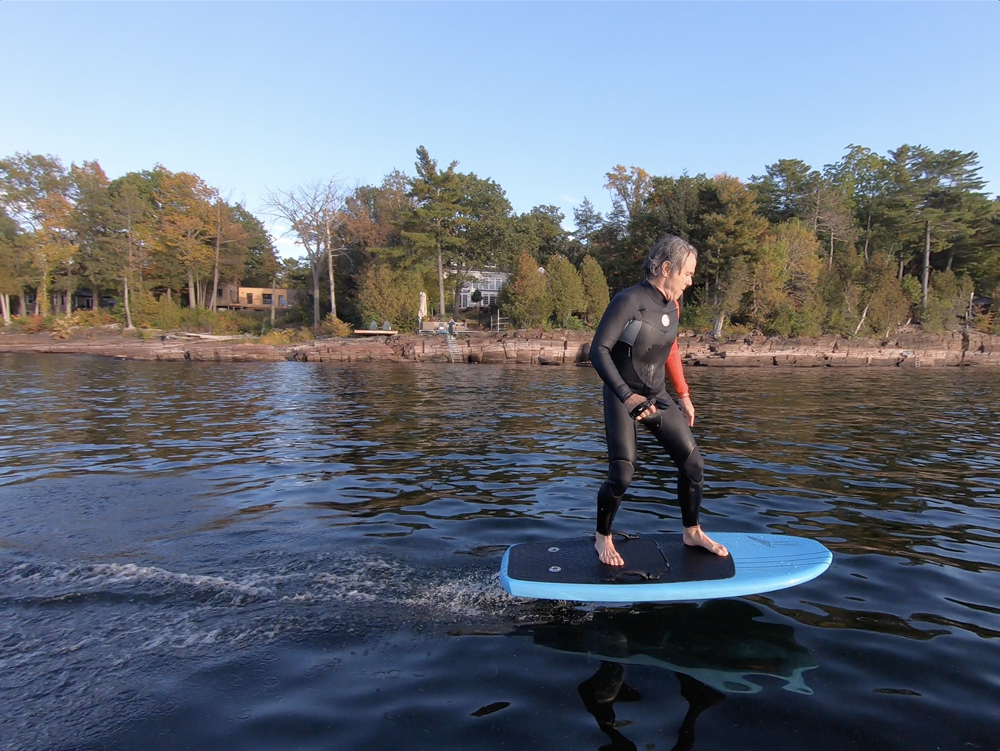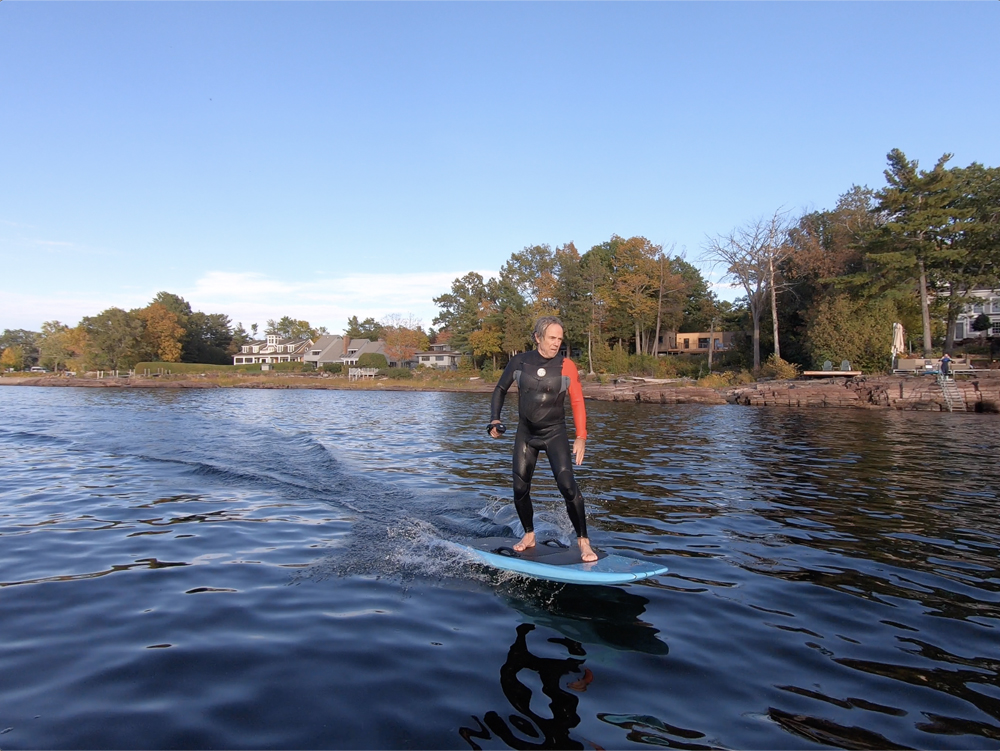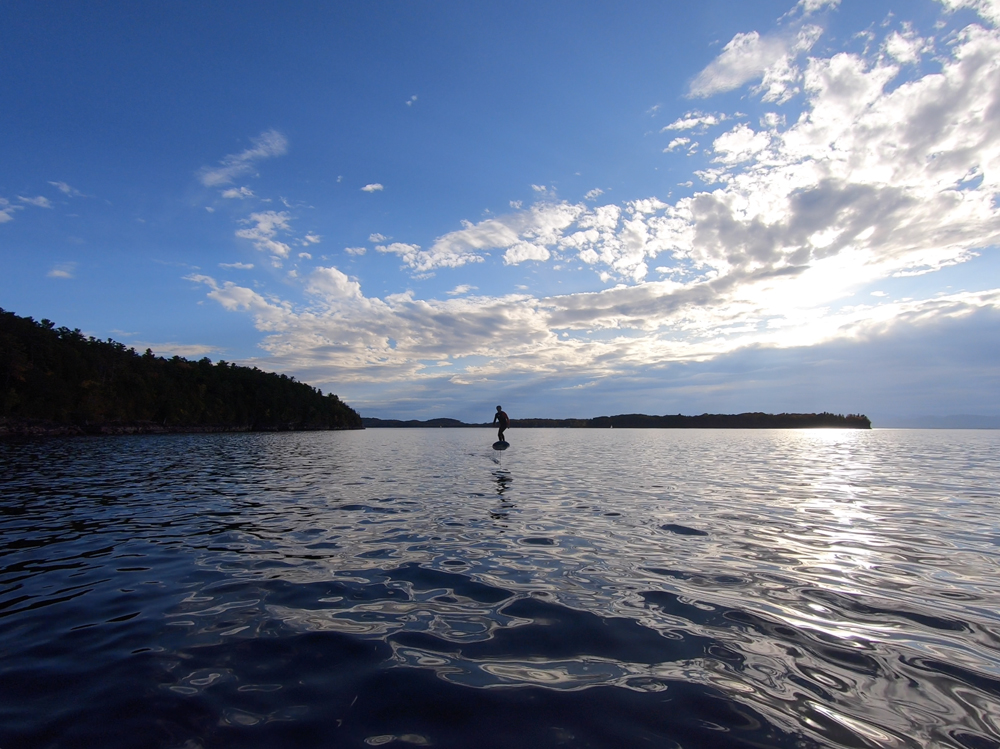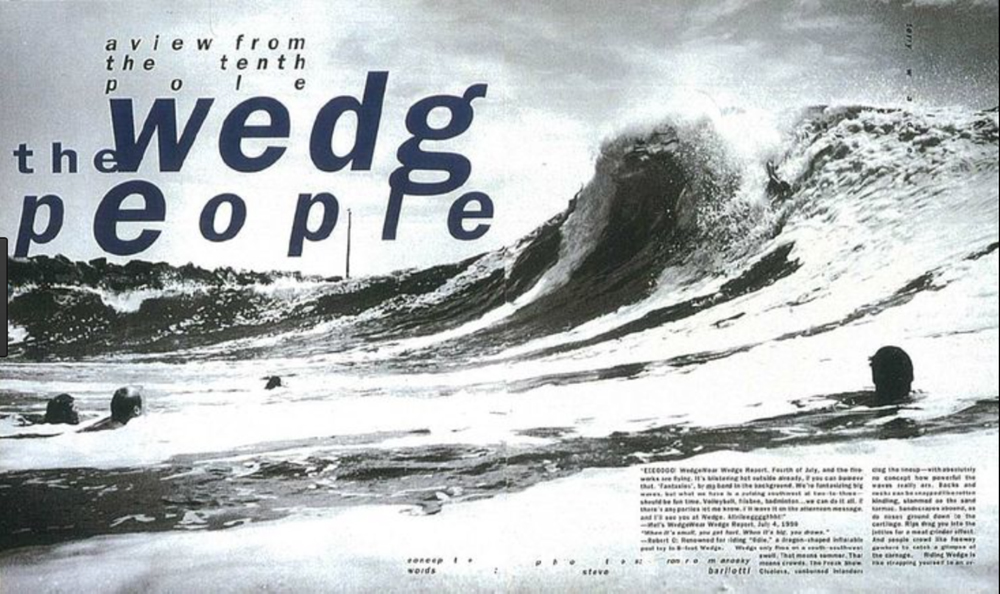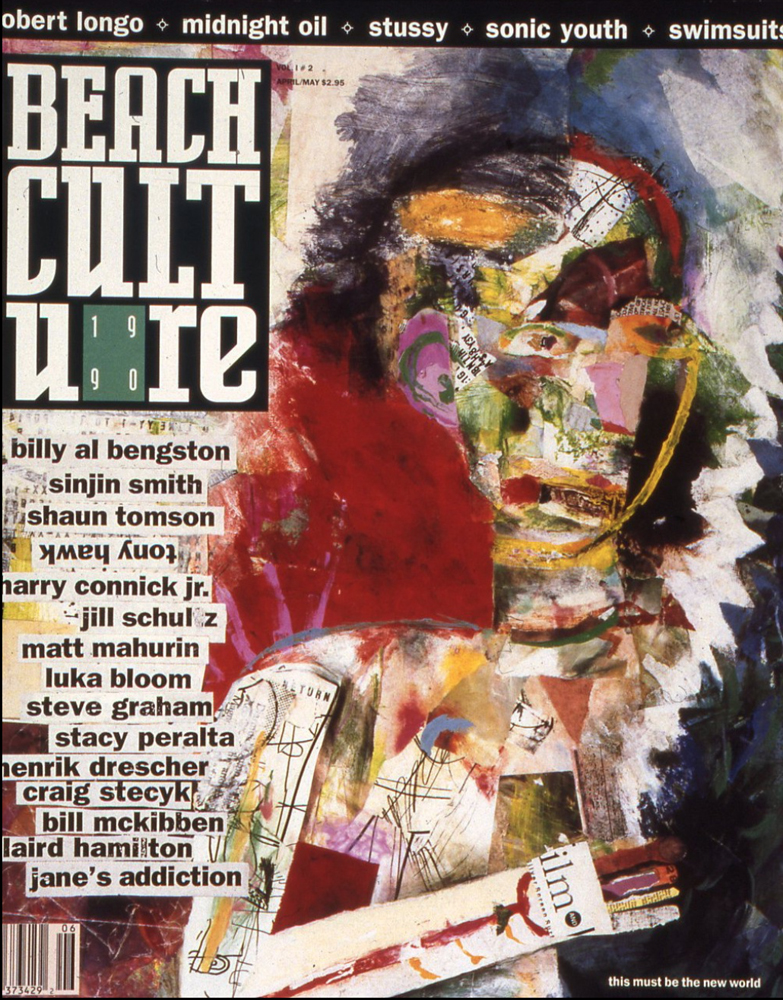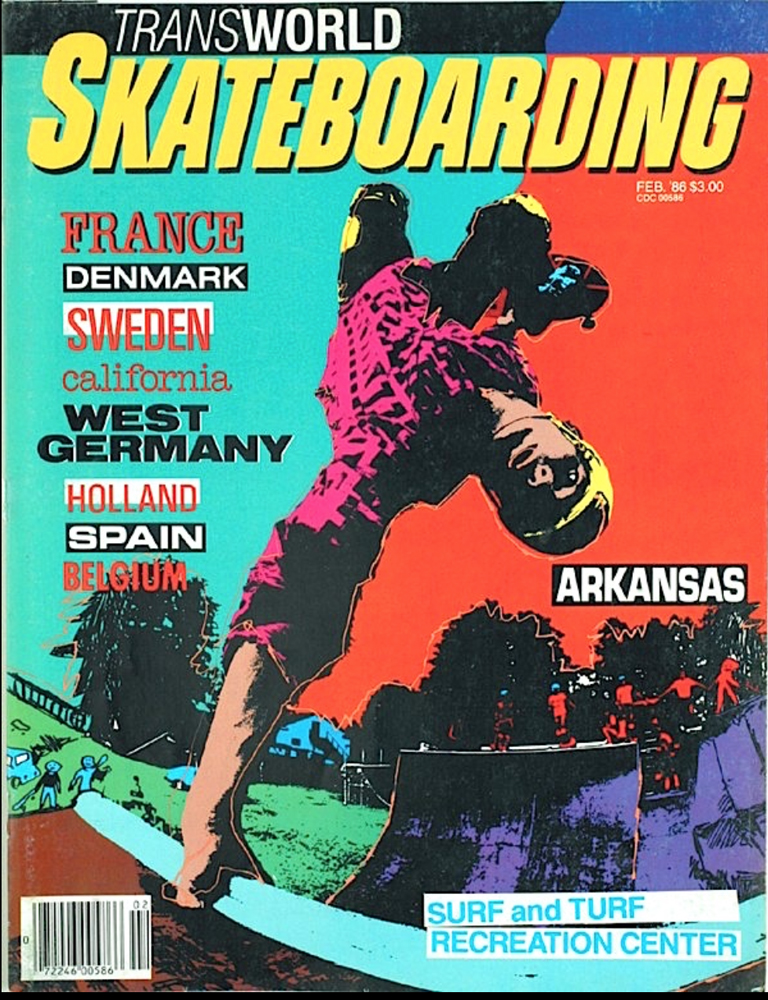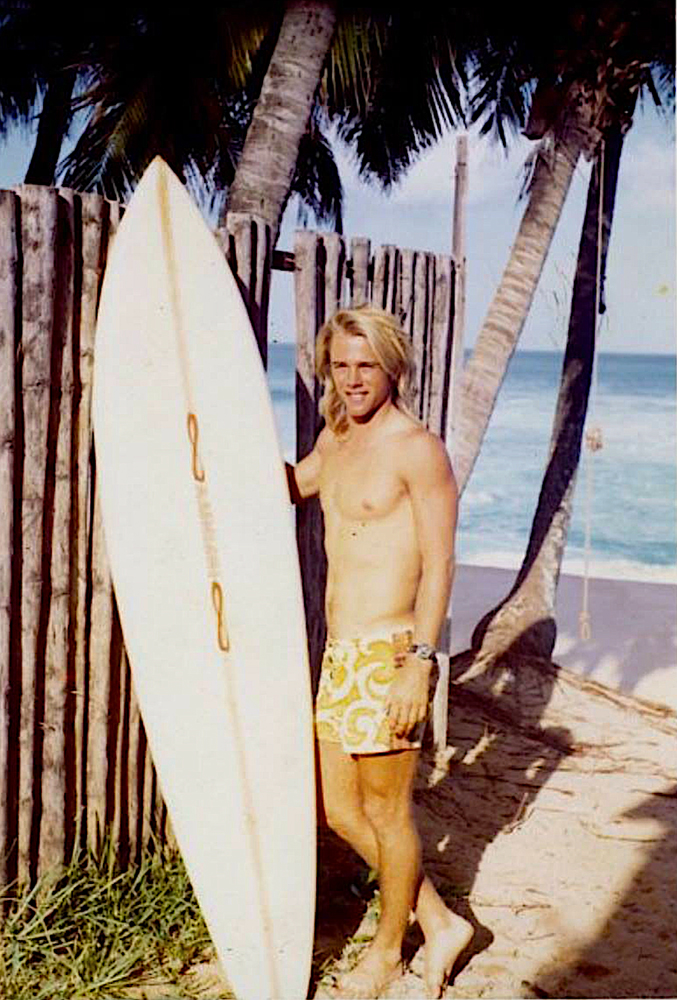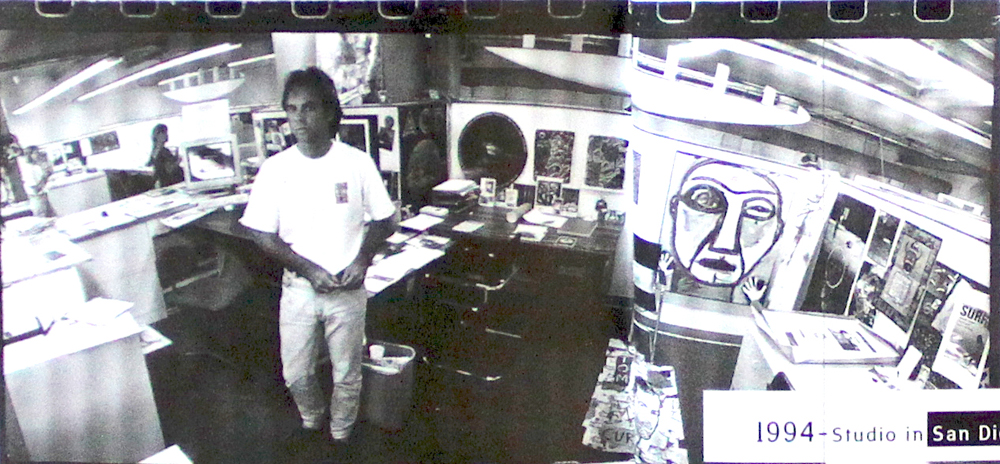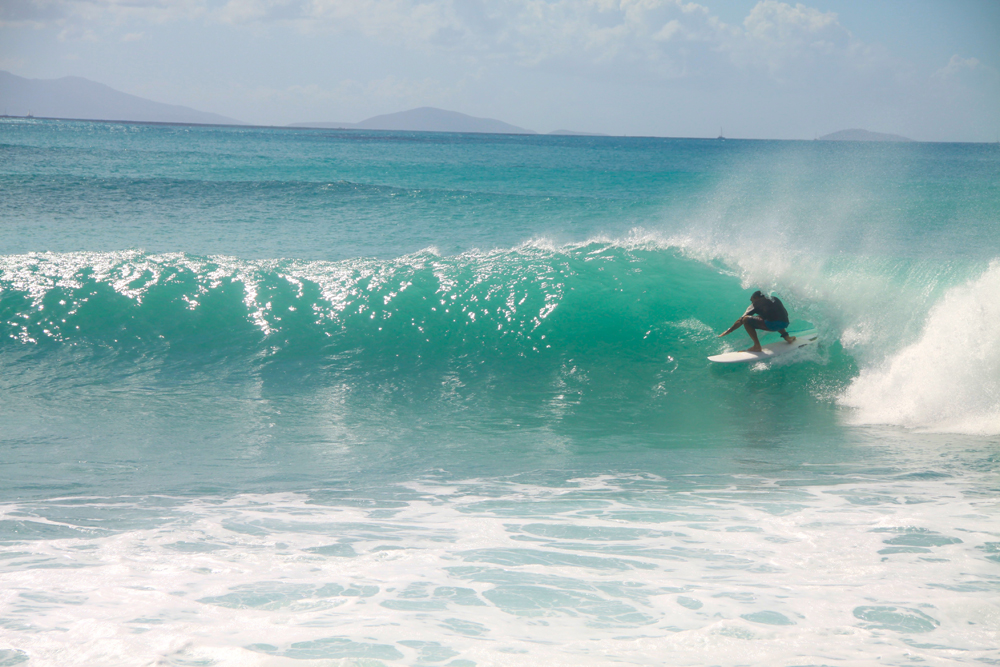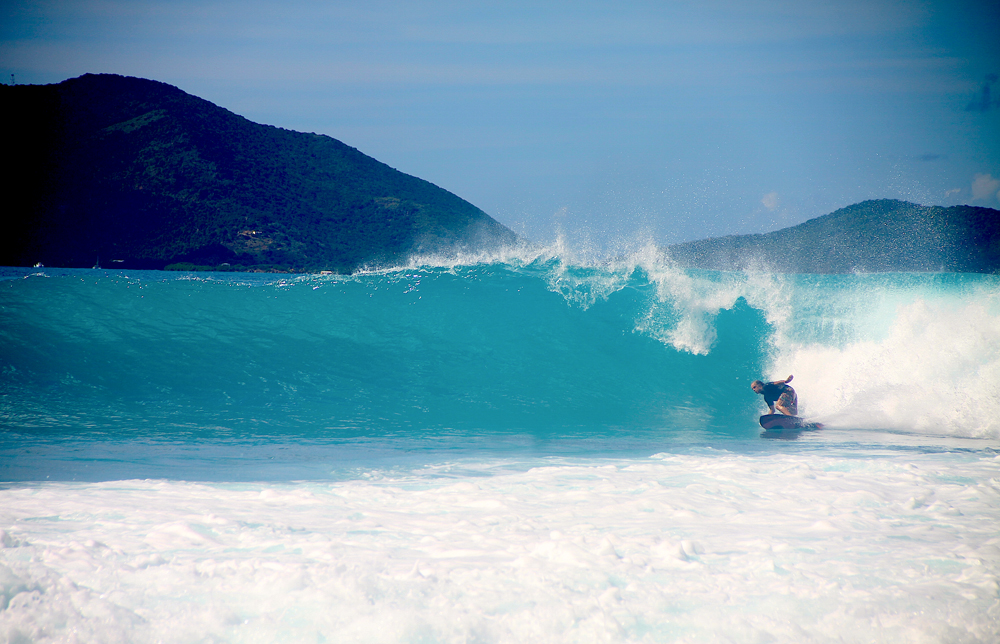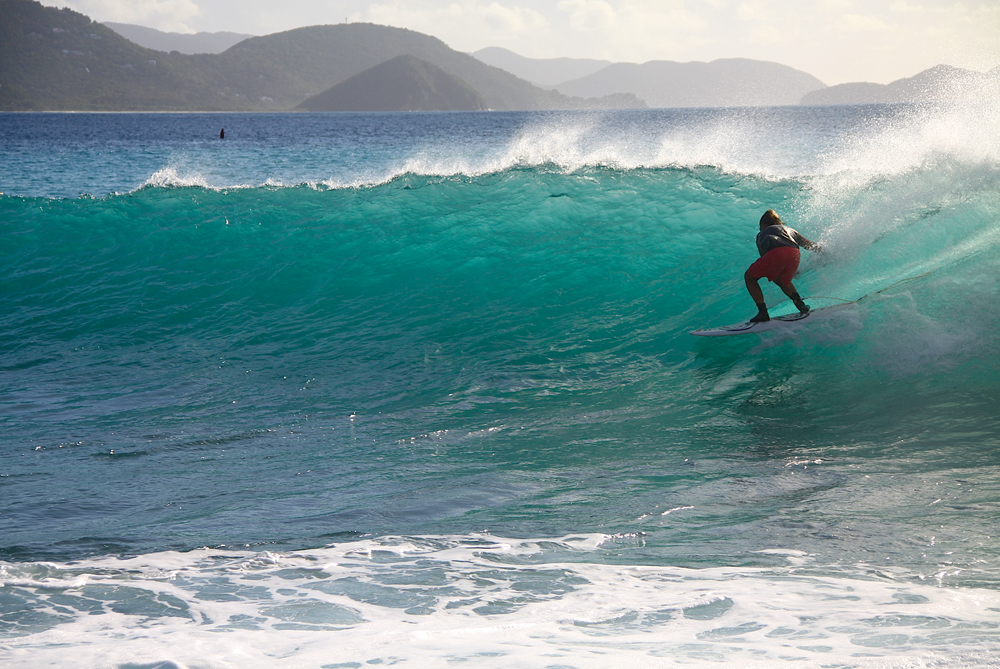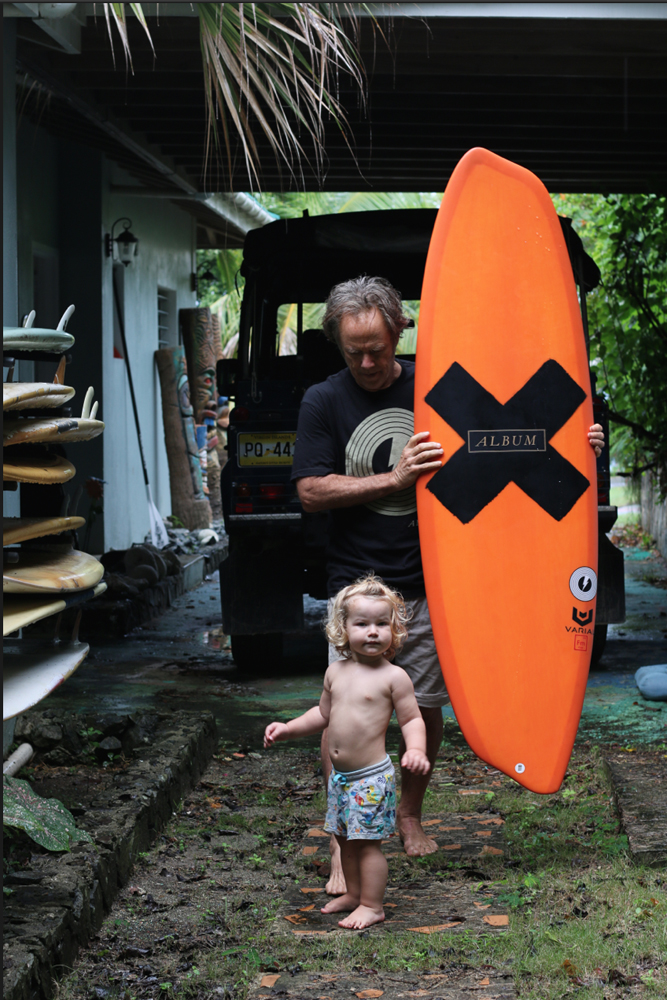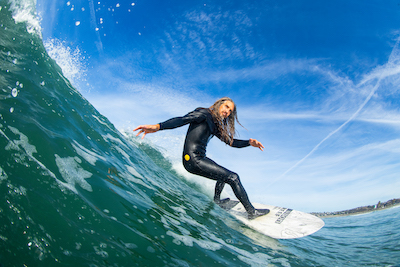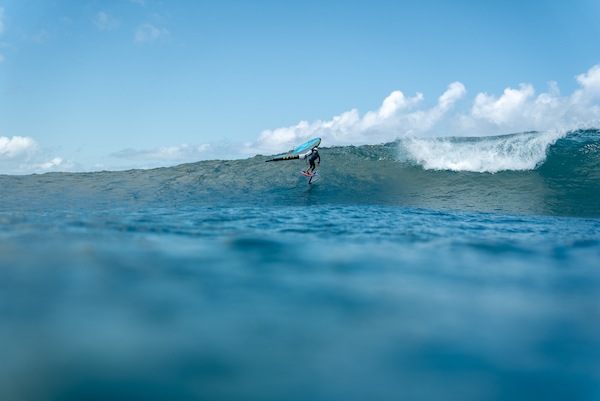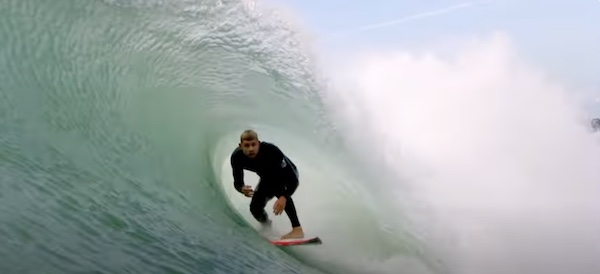David Carson: From Pro Surfer to Graphic Design
I’ve been surfing now for more years than I care to admit. Fifty, maybe more. Surfing, along with my graphic design work have been long-time passions of mine even though at eighteen years old, I went to the West Indies alone for three months to "get surfing out of my system" before college. That didn’t work.
I competed in the Pro divisions of west coast surfing events. I was one of eighteen chosen amateurs from around the world invited to the Smirnoff ProAm at Sunset in Hawaii. I had a Signature model surfboard, fins, wetsuit and surf trunk endorsements.
But then, at 26, I discovered graphic design.*
Initially, graphic design took me away from surfing, but in a good way, as I never had to deal with the “aging athlete syndrome” or staying in the sport too long and all the indignities that come with that. I simply took all the creative energy and time I had channeled into surfing and moved it over to graphic design. My decision wasn’t deliberate or conscious, but that’s what happened.
At the time, twenty-six was considered to be too old to be competing in the pro surfing world. The Men’s division was defined as 18-24 and after that, the dreaded Masters division began.
Eventually, in a full circle kinda move, I made enough money to buy a house on a perfect right-hand point break in the West Indies, and got back to surfing. That’s what I did every winter for the past 20+years I returned to the world of surf that was literally in my front yard. Every winter, I’m able to jump off the property and, in a few strokes, I’d be in the non drift warm water with an often empty lineup.
*David Carson is a true luminary in the artistic world of Graphic Design. His unconventional and experiential graphic style revolutionized visual communication in the United States during the 1990’s. As art director of the magazine Ray Gun, Carson introduced “grunge typography” formats and captured innovative layouts changing the face of magazine formats for years to come. Today, David Carson as a graphic designer taught in any reputable graphic design program, and he is an art director and surfer who continues to challenge convention. Any graphic designer worth his/her salt, has studied David Carson’s work.
Full Circle: Lake Champlain & Learning to Foil
Let’s fast-forward to Lake Champlain, early October 2019, and learning to fly the e-foil by LIFT. While somewhat intrigued, I wasn't nearly as excited as my two fellow learners, Evelyn and Rox, on the morning Russ offered to take us out to his "front yard" on the lake. The girls were both suited up in wetsuits as I sipped another coffee. I was the last to give it a try that morning. I’d never tried foiling and, although curious, had some reservations having heard reports of how difficult foiling was to learn. I’d heard it was dangerous. There were accidents and such.
I was very curious about the ride of foiling itself, as everyone is. It sounded so bizarre to be flying above the water. The glide, the speed, the movement definitely drew me in.
I still skateboard, and Jake Burton (may he rest in peace), taught me to snowboard.* But I had never tried to fly the foil. I’d never even seriously considered trying it. That is, until my buddy Russ showed up with two electric foils from LIFT and offered a lesson.
For our Lake Champlain session, Russ brought out a 5’ foot board from LIFT and a 5’6. The girls were given the 5’6 to share and I was bestowed the shorter board to try. It was a bit windier that day on the lake than I would have liked, but all things considered, not bad.
I quickly learned how addicting foiling can be.
* Jake Burton Carpenter (April 29, 1954 - November 20, 2019), founder of the brand giant Burton Snowboards in Burlington, Vermont, was one of the inventors of the modern day snowboard, thus giving life to a whole new style of sport. Burton is credited with developing the financial platform surrounding the lifestyle of snowboarding as both a sport and a culture. Since the late 1980’s, the Burton brand continues to be one of the world’s largest snowboard and snowboarding equipment manufacturers. This legacy continues under the guidance of Burton’s wife, Donna, who continues to serve as CEO of the company.
Flying the eFoil: Trigger Finger & Quite a LIFT
A unique aspect of learning to fly an e-foil is managing the trigger which controls the foil’s speed. There is a propeller attached to the bottom of the shaft near the wing. In his/her hand, the foiler holds a device to control speed and, ultimately, the lift. The hand control or speed stick is tricky. There are fine-tuned adjustments to be made on the fly as you learn to propel the board ‘flat’ through the water, then go faster in order to stand up. Through this process, you cannot slow down or ease up on the throttle. As Russ continually reminded us, “speed is your friend.”
There is a dynamic learning curve for the e-foil. It’s a dance of multiple elements working in tandem which seduces you to another try, and another, and another. As a foiler begins to understand the mechanism and balance points on the board, it has a way of enticing you with steady progress until you start to get the feel of it.
I tried to remember the lesson about speed and maintaining steady pressure with the hand control. I repeated to myself, “Speed is your friend” after seemingly hundreds of false starts, only to slow down as I went over large wakes from passing boats, wind chop, or even crossing over my own wake with the foil.
I got frustrated. At one point, I even wondered if I would ever manage to get to my feet and then get the foil to lift. Would I have to swim or paddle back to the boat, tail between my legs, humbled? But with each attempt I slowly began to get a feel for what was needed: squeeze the trigger in a slow, consistent manner, get to my feet and stay low, weight over the front foot. Each try brought more understanding and another attempt. Without fail, with every practice run, I felt progression in my technique and then the next attempt would go horribly wrong. Early. Jeez.
The cold water of Lake Champlain was never an issue, except for about five seconds after the first fall and impact. Soon the water temp was quickly forgotten in the heat of concentration and learning how to control the foil.
Truth be told, at the beginning I was having limited success with every attempt. I struggled to get to my feet as the board planed on the water and was not "foiling" in the least. And yet, there was something I noticed early on. The LIFT foil was fun even while I was just belly riding on it, squeezing the trigger and skating along the water. Later, when I progressed to riding on my knees, I discovered that just cruising along the water afforded amazing views and a feeling of exploration, with the water, sun and wind engulfing me, body and mind.
Learning to foil was fun, fun, fun!
Steady, Consistent Effort: Foil UP!
Russ saved the day by suggesting I try the longer board. As soon as I did, I began to find more stability. For me, the 5’6 board made all the difference.
After every assorted fail and attempt to get up, I finally got one run, surprisingly into the chop & wind, where I stood on the board. I’m pretty sure I wasn't foiling, but riding at what felt like blinding speed into the wind, sun and lake with the mountains as an amazing backdrop, I was smiling big, even hooting, as I skimmed across the top of the water, standing tall, soaking in the moment.
I kept going on that run for a long time until I was a dot on the horizon from the boat. I would later tell Russ, and thought it in that glorious moment, that I will remember this successful first long ride for the rest of my life. I will! It was that good.
When I’m surfing, I often enjoy windy offshore days when I’m just standing tall, with my head back and concentrating on the wind hitting my face. I was experiencing this same sensation on the foil. I was beaming, looking up to the clouds and - at one point, for some reason - sent up a greeting to my late father. Happiness.
After running the foil some distance from the boat, I began my long, wide turn to head back towards Russ and promptly fell in the water. It didn't matter. I was so stoked, I enjoyed the brief swim back to the foil.
It went like this for, what they later told me, a couple hours. I had no idea! With the little victories, awkward falls, and getting an occasional longer run on top of the water, I began to understand how I might actually be foiling there for second! Russ later told me he heard me hooting after a bunch of rides of varied short distances. Yes, he did.
I’m generally not a hooting kind of guy.
Second Session: I’m Generally Not a Hooting Kind of Guy
We took a break and then went out for a second session. I experimented with various foot stances on top of the board. My surfing experience helped in finding where to place my feet. Watching me, Russ pointed out that I had my feet way too far apart. I had been trying to adjust my balance from the sudden changes in height that come when finally learning how to lift the foil off the water and again when crossing through the back of the boat’s wake. Russ advised not to stand as if I were on a surfboard. For me, the optimal stance for balance was actually pretty similar.
For another 2+hours that afternoon, I was in the moment. I felt completely present in my body, the wind, the board and lift with occasional glances back to the boat after a good ride in hopes my comrades had seen it. Learning to foil was certainly a throw back to surfing. “Did you see it?!” It was almost impossible to stay cool and pretend like it didn’t matter. Not that I tried. OK, maybe a little.
There were many unsuccessful attempts to get to my feet and then get “on foil” for any length of time. But, fortunately, instinct kicked in. The cycle of ride, fall, get up, try again, get up longer, fall again, retry, hoot and remembering not to pull on the trigger while maneuvering the board around. If you did, the board would just shoot away from you. Good for a laugh and a good swim.
Finally, resting on the dock, I witnessed my new, good friend Evelyn, out of nowhere and really far out, go foiling by for what seemed forever. Although we were not officially competing since we were both learning the foil together, I did feel that since we had been active among competitive surfers for years, watching her succeed helped to propel me. Like, okayyyyy, I’m going to do this!
I’m still not positive how I managed to make that foil fly. It was more of a feeling after years of legs and torso surf training and muscle memory. There was just this amazing feeling of floating , flying, quietly and beautifully, wind in my face. Pure joy.
There were hoots and smiles, even raising both of my hands in the air, like I do after a great wave, completely unaware and not caring if anyone was watching. It is a pure expression of enjoying the moment, feeling the jubilation, and celebrating being alive.
“The Most Fun I Can Remember Having”
When the boat finally came around to head in as we were losing light fast and the sunset was fading on the lake, I told Russ, “That is the most fun I can remember having."
I would repeat that statement more than a few times at dinner and I glowed until late that evening. Like learning to surf again, I was on a natural high after the afternoon of foiling.
Russ later surprised me with a video taken while I was flying above the water. I really had that foil lifted! The video surprised me as I didn’t realize I was flying for any length of time.
Next time, I’ll stand a little straighter, stay up longer, keep the throttle maxed and foil the entire lake.
Can’t wait for that next session.

